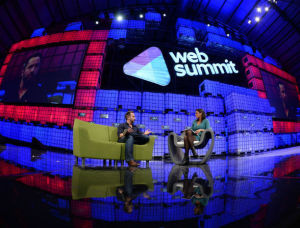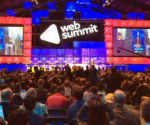Web Summit 2014 [DAY 2]
 Over the last couple of weeks I’ve been away getting married in Boston and honeymooning in Tulum, so Deirdre Savage from digital marketing agency, Big Bang filled in for me at this year’s Web Summit and wrote the following summary.
Over the last couple of weeks I’ve been away getting married in Boston and honeymooning in Tulum, so Deirdre Savage from digital marketing agency, Big Bang filled in for me at this year’s Web Summit and wrote the following summary.
Back again today and it seems like there are even more people streaming into the Web Summit. The place is looking great and we’re all ready to delve into what is on offer.
Social Media and Conflict
Anne-Marie Tomchack of BBC trending was first on the centre stage to give some insight into how social media is changing conflict.
In one sense social sharing has resulted in a huge increase in the amount of misinformation being spread. During the Gaza conflict this year social media was used as a way for people to get information on what was happening but two of the most shared photos of the atrocities were from other conflicts; one was from Syria and the other was from several years previous. This is a mistake that happens quite regularly but the interesting point is that when the original sharers of this content were informed of the mistake they didn’t take it down as they believed the sentiments the images portrayed were true to what was happening.
In another sense, as with the case of #BringBackOurGirls, social media will keep raising awareness of issues long after the main-stream media has moved on. There are on average 3,000 tweets a day using the hashtag.
To sum it up, social media is the newest weapon in war. It can help maintain focus on issues which would otherwise be forgotten but the power the people have over the information can taint it before it can be properly analysed.
I headed to the Marketing Summit to find some lighter content. In spending the majority of the day here I noticed a few running themes coming from all directions.
Content
As we know, Native Advertising is an incredibly useful tool as it can be difficult to identify the advert but the last thing a brand wants is to click on what they think is content only to be served up bland adverts. Content is King and brands should become publishers. In creating an ad that is relevant to the content and the users are are creating something of value which will, in turn attract a larger number of quality leads.
Personalisation of the content presented has been a repeatedly raised theme throughout the entire summit. Many say the majority of this personalisation can be done through the use of algorithms but the most effective method is to include a human element. Despite all this innovation and development in tech we have yet to surpass human intelligence. It still needs to be applied to create effective campaigns.
Big Data
Big Data is looking like the buzz word of this year. There were a number of talks on the marketing stage addressing the idea and potential using Big Data to create effective online campaigns.
Data collectors know everything there is to know about users but at the same time the majority of users globally class the adverts they are shown as irrelevant, annoying or both. The majority of marketers have yet to figure out how to truely mine this data for usable information but the potential is huge.
Typically it is 5 – 8 times more expensive to replace a lost customer than it is to keep a current customer. Big Data can be mined to give companies the information they need to create a truely customer centric online strategy that only gets stronger the longer the customer stays.
The Brand’s Worry
Keith Weed of Unilever & Alexandra Suich of The Economist closed off the Marketing Summit with a general discussion on the current state of marketing which tipped on several of the major point being raised throughout the day. Keith drew attention to the worry for brands in tying all these different elements together. The marketing industry is currently made up of so many seperate elements many brands are forced to use a number of agencies (one for video, one for social, one for mobile etc.). As a result, the message may become fragmented.
Day 2 of the Summit and the major focus seems to be on creativity, personalisation, privacy and the potential to use the huge amount of data already out there to enrich our customers online experience and possibly scare them a little too.













